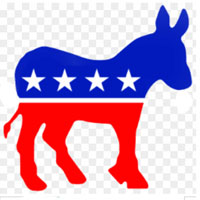What you need to know to participate
— from David Turnoy, Chair, San Juan Democrats —

As you are probably aware, the procedure for choosing presidential nominees has changed from four years ago. A few months ago I had sent out a summary of what I understood at that time to be the changes, but from subsequent phone calls with state Democratic Party officials and attending a state party meeting in Vancouver this past weekend, I now have a more detailed and clearer understanding. Before I provide all the details, here is a simplified version of the information to follow:
Presidential Primary March 10, 2020:
- Ballots arrive late February.
- You must declare either D or GOP for the election, then fill out the side of the ballot printed with the names of that party’s candidates.
- Each Congressional District (CD) in WA has been allotted a number of delegates to the CD convention.
- Presidential Candidates will be allotted delegates by percentage of votes earned in each Congressional District in the Presidential Primary Election.
- A candidate must earn at least 15% of the vote in a Congressional District to receive delegates from that CD.
County Caucus May 3, 2020 in Friday Harbor:
- We will already know how many delegates each candidate gets.
- We will elect the allotted number of people to be delegates for each candidate.
- Those delegates will attend both the CD Caucus (May 30th) and State convention (June 12-14).
- People wishing to continue to the national Democratic convention will need to get elected at the CD or State level.
- We will also entertain resolutions and finalize our County platform at the May 3rd Caucus.
The process starts this year with the presidential primary on March 10, which is where you get to vote for your preferred presidential candidate. Actually, you will receive your ballot several weeks before that date, but the ballots are due to be turned in by March 10. This is our typical Washington state vote-by-mail scenario. In the past, this primary vote was not necessary or determinative, as Democrats in our state chose presidential delegates not in a primary election but in person at caucuses. This year that is different in the following way: The number of delegates for each presidential candidate will be apportioned based on the results of the primary. Also, the required threshold to get any delegates is to receive a 15% share of the vote in any Congressional district. So, if you want your preferred candidate to have a
chance, you must vote in the presidential primary.
You may want to consider the following strategy in the timing of your vote: The Tuesday before our vote, March 3, is Super Tuesday. On that date, more than a dozen states will hold their primary elections. The two most populous states, California and Texas, are included among those states. It is quite possible that candidates who do poorly that day will drop out of the race, narrowing the number of candidates in advance of our primary. If you are currently supporting a candidate who has low national polling numbers, by waiting until after Super Tuesday to vote, you can be assured that you will be voting for a candidate who is still in the race. Instead, if you
vote early but then find that your candidate has dropped out after Super Tuesday, your vote for that candidate will be a wasted vote. But if you do wait, be sure to get your ballot in on time to be counted. Just a note that as of this writing, there are 13 presidential candidates on our Washington state ballot, or you can choose to be “uncommitted”.
The presidential primary ballot will look different than other ballots you have received before. Whereas we are an open primary state here in Washington, which means you don’t have to declare a political party preference to vote, in this one case you will have to choose a party. If you want to vote for a Democratic candidate for president, you will have to choose the Democratic Party on your ballot. You may indeed consider yourself an Independent, and normally that is fine, but in this one instance you will need to choose, as there will only be the options of voting for a Democratic candidate or a Republican candidate. One side of the ballot will be Democrats, the other side will be Republicans. On the back of the ballot you will have to declare that you consider yourself a Democrat (or Republican) for this election, and then you must sign your name. If you want your ballot to count, you must do these things.
If this is confusing or you have other questions, feel free to call me at 360-376-4165 or email me at davidgeri@centurylink.net. If you know others who would like to receive this information, have them email me so I can put them on our email list and send them this letter (or you can forward this information to them).
**If you are reading theOrcasonian for free, thank your fellow islanders. If you would like to support theOrcasonian CLICK HERE to set your modestly-priced, voluntary subscription. Otherwise, no worries; we’re happy to share with you.**







